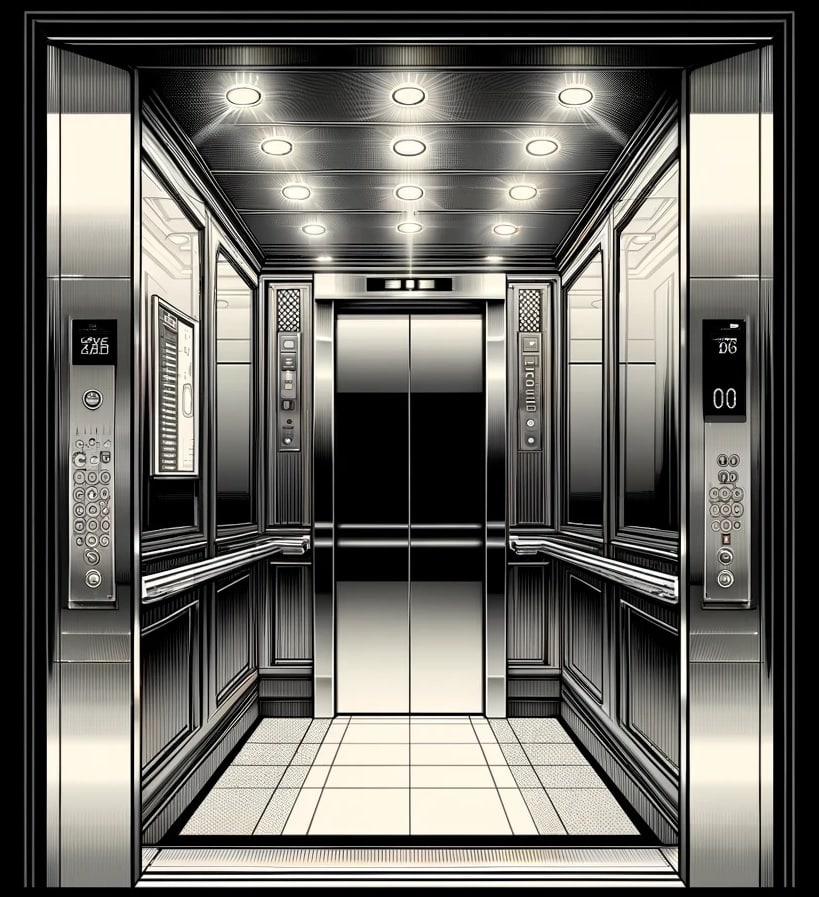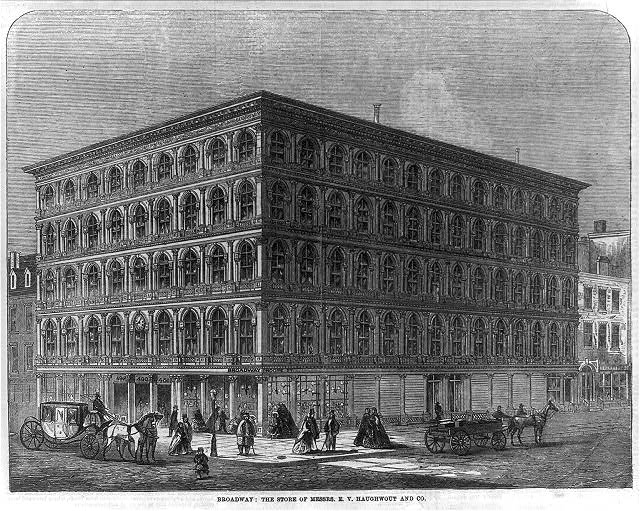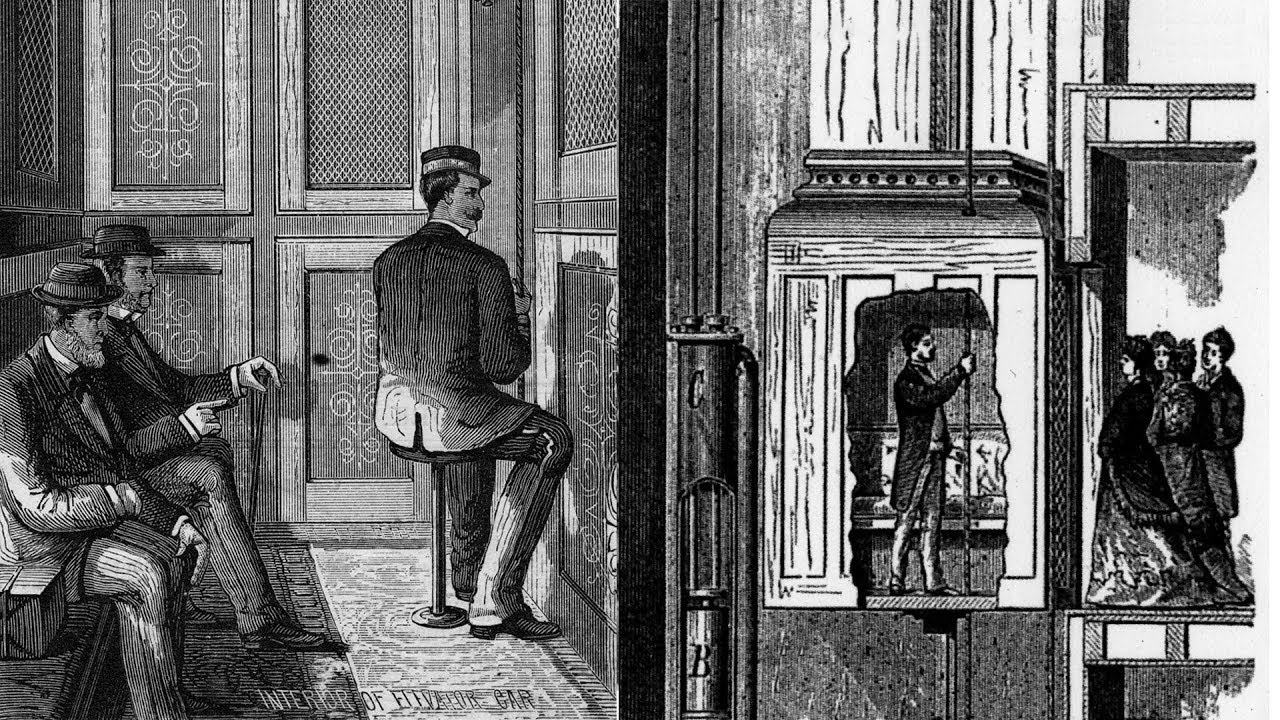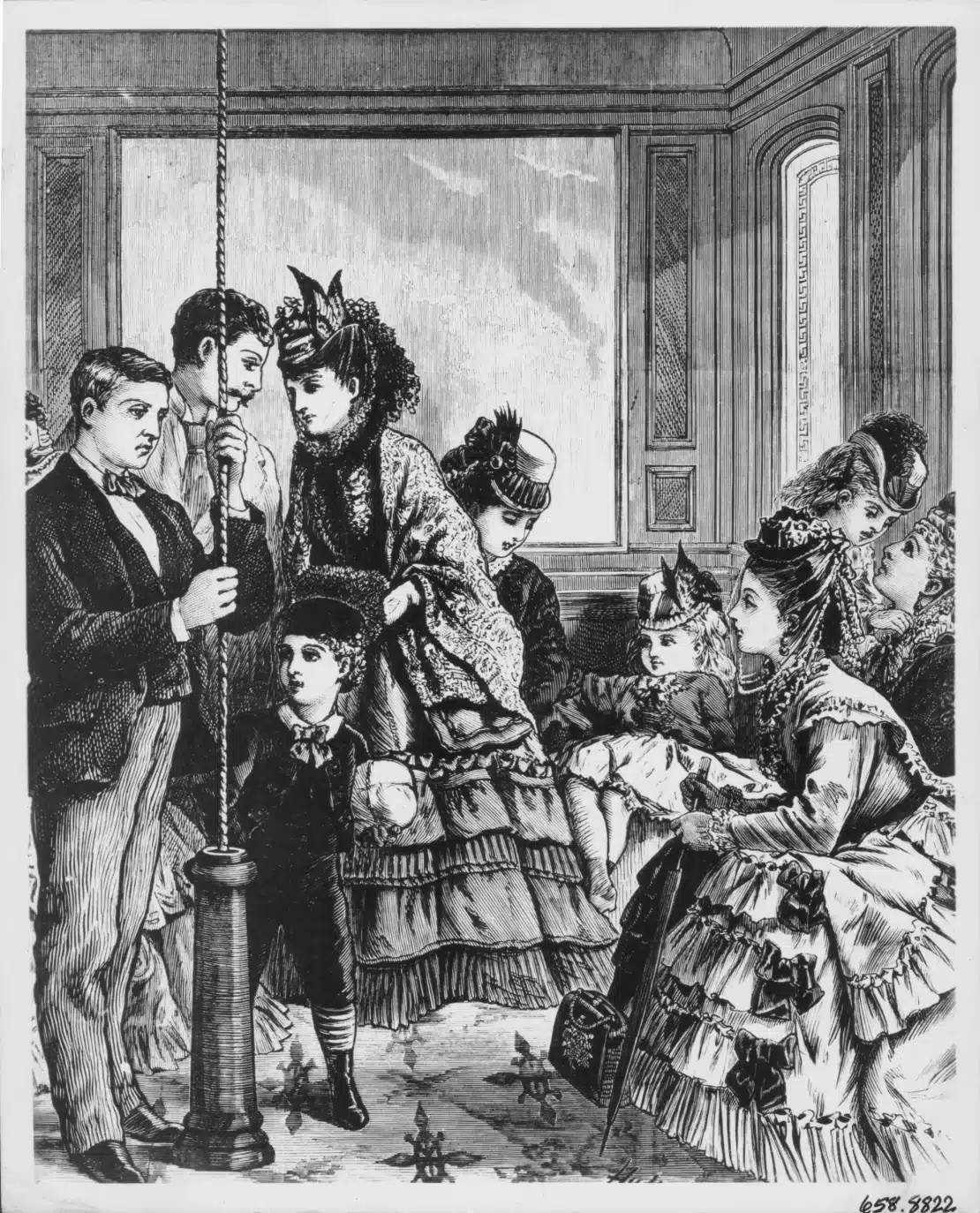
Why are there MIRRORS in elevators?
(5 min read)
tl;dr
The purpose of mirrors in elevators is functional, but it's psychological rather than mechanical.
Back in the early 1900s, elevators were slow, and people constantly complained. Instead of spending loads of money on faster elevators, someone had a clever idea: install mirrors to distract people. This simple trick made elevators seem faster and complaints dropped dramatically.

1857, Haughwout building - the first building having Otis' elevator, source
Elevators back in the day
When skyscrapers started popping up everywhere, elevators became essential. But these early elevators were slow, and people got really frustrated waiting for them.
Why annoyed?
The slow elevators meant people felt like they were wasting time. The wait felt endless, leading to constant complaints from tenants and visitors.

1870s, elevators New York City, source
The clever psychological solution
Building managers first turned to engineers to fix the slow elevators. They looked into faster motors, modernizing the systems, or even replacing the elevators. But these fixes were too expensive and complicated for old buildings.
A new approach
In a brainstorming session, a young psychology grad (so they say) suggested a different solution. He figured the real problem wasn't the slow elevators but how people perceived the wait.

Rlevator in the Lord and Taylor Department Store, Manhattan, 1873.
The psychology behind the mirrors
They changed the perspective and started to ask smart questions:
- Is it really too slow?
- Why do people think it is slow?
- What makes people so uncomfortable in elevators to not be able to wait a few seconds?
- How can we distract them?
- How can we make the journey more comfortable?
- Is it because elevators are too tight?
- Are people scared of heights?
They realized people were just bored. People thought the elevators were a lot slower than they actually were!
People had an exaggerated sense of time because they had nothing to do and started to THINK. Think about safety of the flying elevator, and what would happen if it started falling
Their solution? Install mirrors in the elevators and lobbies to give people something to look at.
Mirrors as a distraction
People constantly think about themselves. So why not use that information and let them distract themselves by providing them with a way to do so?
With mirrors inside an elevator, they would become preoccupied with HOW THEY LOOK, instead of WHERE they are. They could check their hair, fix their clothes, or just look at themselves. This simple distraction made the wait feel shorter.

The results
Installing mirrors had an immediate impact. Complaints about slow elevators almost vanished. People, now busy with their reflections, thought the elevators were faster, even though the speed hadn't changed.
A cheap fix
This trick was way cheaper than any engineering solution. It also taught an important lesson: sometimes the problem isn't the system, but how people interact with it.
What happened next
Elevator mirrors became a standard feature in buildings. This success showed that understanding human behavior can lead to simple, effective solutions.
Bigger picture
The story of elevator mirrors is a great example of solving problems by considering the user experience. Instead of spending big on technical fixes, sometimes a small change in perspective can make a huge difference.
The results?
People started noticing how much FASTER the new elevators were even though the speed and the technology were EXACTLY THE SAME.

Spotlight effect
The "spotlight effect" refers to the tendency to think that more people notice something about you than they do.
It also translates to HOW MUCH we think about ourselves - which is A LOT.
The above-mentioned mirror story, shows how we can improve our customers' experience, when we focus on them, instead of on our product.
Claustrophobia
In tight spaces, some of us may feel terrified. We all know someone who feels claustrophobic inside an elevator.
A mirror in an elevator makes it look more spacious. Like there is more room than it is in reality.
Security
Mirrors in the elevators let us also see everything that's going on inside. Including some mischievous behavior of some people.
It alerts us to any potential assaults or robberies.
Conclusion
The invention of elevator mirrors shows how psychology can solve engineering problems. By looking at how people experience the wait, a cheap and easy solution was found that still works today. Before jumping to technical fixes, it's worth considering the human side of the problem—sometimes the answer is more about the mind than the machine.